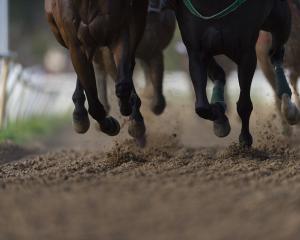The Forbury Park Trotting Club will mark 100 years of harness racing at Forbury Park in November.
A race meeting is scheduled for Thursday, November 26, the identical date of the first meeting on the track in 1909.
"We plan a dinner on the Friday night after the Thursday race meeting and a family day at the workouts on the Saturday," Ian Woodhouse, the chief executive of the club, said.
"We have arranged for Reon Murtha to be guest speaker at the dinner and a sub-committee has been set up seeking sponsors for the race meeting and overall event."
The club has been racing for 110 years and held its first meeting at Tahuna Park in May 1892.
It held a centennial meeting in October 1992 under president Syd Brown, the successful Mosgiel owner-trainer-breeder.
Alan Clyma is the current president.
The name of the club was changed from the Tahuna Park Trotting Club in 1909.
The Tahuna Park club raced at nearby Tahuna Park which became too small to accommodate the attendances.
The Tahuna Park club bought 30 acres at Forbury Park for 6250 ($12,500) in 1909 writes Bill Saunders in his book, Historical Racing Records.
Forbury Park, a reclaimed swamp, had originally been home for the Otago Jockey Club, which raced there between 1871 and 1899.
The club, faced with heavy expenditure to continue racing at Forbury Park, bought the property it now occupies at Wingatui in 1899.
It later became the Dunedin Jockey Club and has been the Otago Racing Club since 1974.
A five-furlong (1000m) clay track was laid at Forbury Park and the first meeting there featured eight races on the Friday and the same number the following day.
Verax, trained and driven by Claude Piper, for New South Wales owner John Buckland, won the main event, the Forbury Cup, for a stake of 200 sovereigns on the second day.
The totalisator handled 4456 on the first day and 5534 on the second.
The present grandstand accommodating the club office, drivers, stewards, the press and a bar, was completed in 1921.
The stand, used originally for stewards and members greatly exceeded cost as the foundations sank and a supporting concrete structure had to be added.
The present members stand, upgraded in 1991 at a cost of $2 million, was built for the Interdominion in 1965.
It is the only Interdominion in New Zealand held outside Auckland or Christchurch in the 73-year history of the series.
The Forbury Park club took the opportunity to stage the series (three rounds of qualifying heats over a week and finals and consolation races four nights later) after the Auckland Trotting Club declined.
The club applied for the series in 1975 but was refused by the governing body on the grounds the series had become too big to be held other than in Auckland or Christchurch.
The result of 10,000 Pacers' Final in 1965 was a dead-heat between Robin Dundee (trained at Gore by Jack Walsh and driven by Doody Townley) and Jay Ar (trained and driven by Yaldhurst horseman George Noble), the only occasion the honours have been shared in an Interdominion Final.
Poupette, trained and driven by Winton horseman Harry Cox (grandfather of present day reinsman Jonny Cox), won the Trotters' Final at odds of 21 to one.
The Interdominion came to Forbury Park four years after the club switched from day to night racing.
The first night meeting in the South Island was held at Forbury Park on Thursday, January 26, 1961.
Hindu, trained and driven by Gil Shirley, of Invercargill, won the opening race.
Shirley has continued to make his mark as a trainer.
He produced the 3yr-old Vi Et Animo for nine wins from 14 starts last season.
Arania, one the greatest race mares produced in New Zealand, won the Dunedin Cup, the feature race on the second night of the inaugural meeting.
Arania took a mile record of 1.57 in a time trial at Lexington, Kentucky in 1962, making her the fastest horse bred outside America at the time.
Night racing had been introduced to New Zealand in January 1958 by the Auckland Trotting Club.
Wellington followed in 1960 and Christchurch in November 1963.
The advent of night racing was preceded by the installation of all-weather tracks.
A clay track gave way to crusher dust at Forbury Park at the start of the 1960-61 season.














